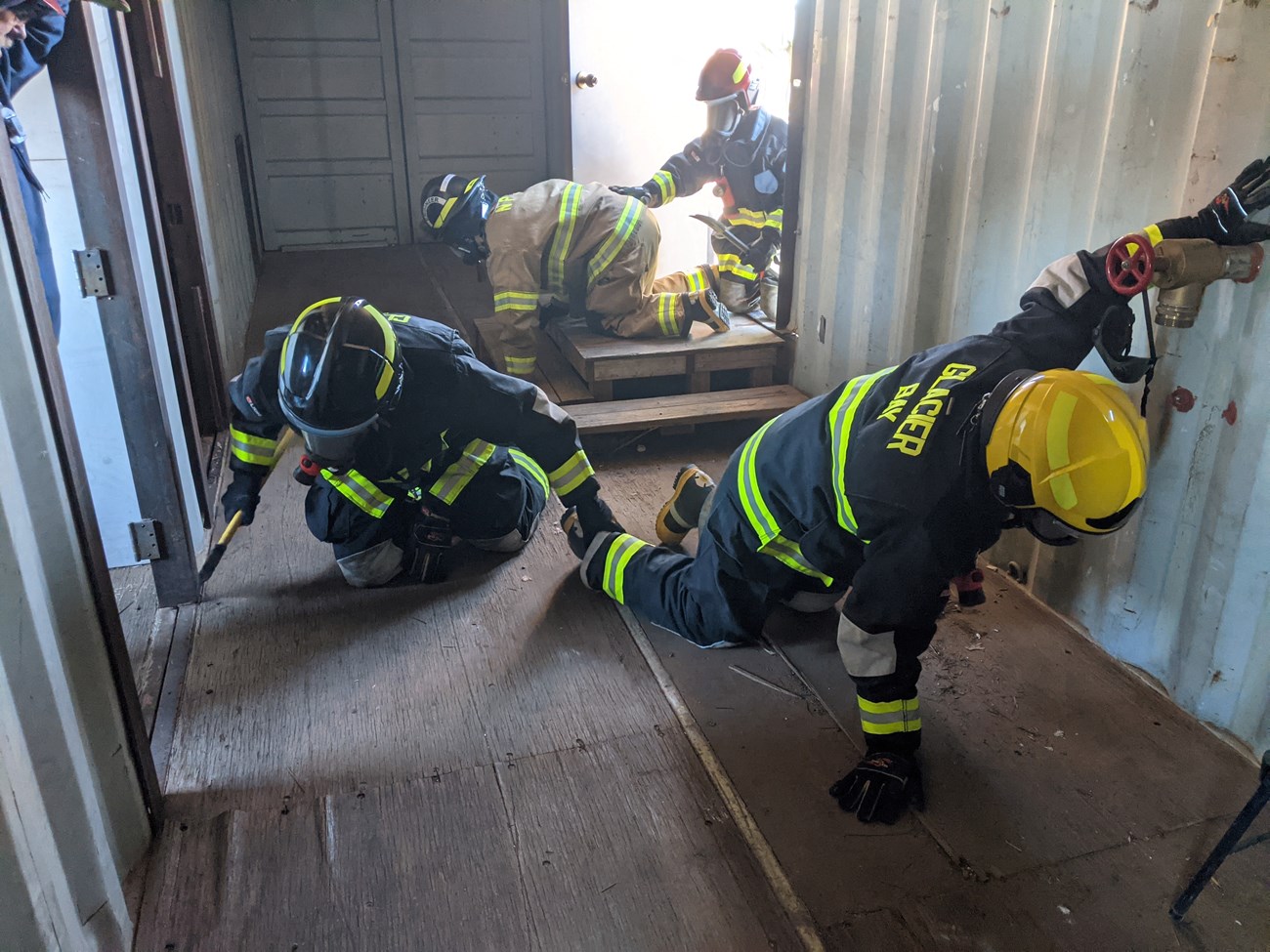Last updated: April 8, 2022
Article
Glen Canyon National Recreation Area Hosts Successful Structural Firefighter Refresher

NPS/D VAN INWAGEN
Mike Schell, chief of operations for the NPS Structural Fire Program, served as lead instructor. He was joined by Instructors from Yellowstone National Park, Grand Teton National Park, Death Valley National Park, and Glacier National Park. The instructors and students made introductions on the first day to set up peer networks across the NPS for future information sharing. Day one included cancer awareness and mitigation, personal protective gear inspection, “Ready Up” drills, and hose load instruction.

NPS/B BEATY
The second day focused on traffic control and vehicle accident response. Proper traffic control measures help protect emergency responders working near traffic. The students practiced using extrication tools such as cutters and spreaders to remove windows, force doors, and cut off roofs to gain access to the passenger compartment. The day ended with a motor vehicle incident capstone exercise. Firefighters responded to the vehicle accident, established a motor vehicle incident traffic control zone, and extricated a patient who was then transferred to advanced medical care.

NPS/B BEATY

NPS/ B BEATY
